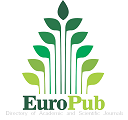Review: Nutritional Contents and Bioactive Compounds of Mealworm (Tenebrio molitor) as Edible Insect
Abstract
Mealworms (ulat hongkong) are larvae of the rice beetle (Tenebrio molitor) which are considered pests but are also known to have a high content of nutrition and bioactive compounds. These bioactive compounds include antioxidants, anti-inflammatory agents, antidiabetic substances, and antihypertensive components. This literature study aims to review works of literature on the nutritional content and bioactive compounds present in mealworms, as well as the factors that influence this composition. The data search method used keywords such as nutrient content, bioactive composition, and factors influencing mealworms, conducted in reputable journals published within the last 10 years. The results of the literature study indicate that mealworms have high and complete nutritional content. The nutritional content and bioactive compounds in mealworms were influenced by feed, extraction methods, hydrolysis processes, and processing methods used. Freeze drying and microwave drying were recommended processing methods to maintain the nutritional content of mealworms. The main bioactive compounds in mealworms that provide health benefits were the bioactive peptides, omega-3, oleic acid, and chitosan.















